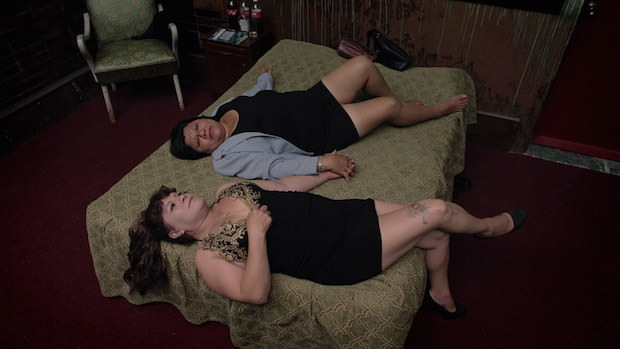 Back to selection
Back to selection
Photographer turned Filmmaker Maya Goded Talks Sundance Doc Plaza de la Soledad
 Plaza de la Soledad
Plaza de la Soledad An accomplished photographer hailing from Mexico, Maya Goded has had her work shown in solo exhibits in the U.S., Spain, Peru, South Africa and elsewhere. She makes her debut as a filmmaker with Plaza de la Soledad, an intimate documentary on a group of sex workers in the La Merced neighborhood of Mexico City. As she told Filmmaker, Goded has been meeting with and photographing these women for more than 20 years. Below, she speaks about how she cultivated such a strong sense of intimacy with her documentary subjects.
Filmmaker: How and why did you wind up being the cinematographer of your film? What were the factors and attributes that led to your being hired for this job?
Goded: I have been working all my life as a still photographer and not a DP. I had very little experience in video. I have been developing my projects by myself and had all the freedom to explore the issues that matter to me such as: old age, sexuality, the human body, conceptions on beauty, love and violence. Prostitution is an issue that I have deeply investigated in my photography. La Merced, where I shot this film, is a commercial district in downtown Mexico City in which I met many prostitutes beginning more than 20 years ago. I have been very close to these women since then and continue to see them.
When I decided I wanted to make Plaza de la Soledad I was convinced that I should keep my way of working and approaching my subjects. I needed intimacy. Thus, the crew had to be as small as possible and very discreet. Shooting my film was something very natural. The women were already used to communicating with me through my camera.
Filmmaker: What were your artistic goals on this film, and how did you realize them? How did you want your cinematography to enhance the film’s storytelling and treatment of its characters?
Goded: This is my first film and I really wanted to experiment with storytelling. I started “playing” with my subjects between following them in their day to day lives and exploring their wishes and fantasies. Most of the time I used natural light but when I felt I needed something that would be in the border of fiction/fantasy I used some lights. But very subtly. It is mostly a film about them but also about my relationship with them. I didn’t want to hide this fact from the audience. It was important for me that the audience felt that I was there but without me invading their space or being a protagonist. I wanted the camera to be the hand that held the viewer and that this made them feel closer to my subjects.
Filmmaker: Were there any specific influences on your cinematography, whether they be other films, or visual art, of photography, or something else?
Goded: The hotography of La Mére by Antonie Cattin, Pavel Kostomarov.
Filmmaker: What were the biggest challenges posed by production to those goals?
Goded: Keeping the intimacy that I have achieved in my photography and in my relationship with them. Having the experience of exploring the moving image while telling a story.
Filmmaker: What camera did you shoot on? Why did you choose the camera that you did? What lenses did you use?
Goded: I decided to work with the Canon EOS Mark II and III because I was used to this equipment. I felt more comfortable.
Filmmaker: Describe your approach to lighting.
Goded: I mostly used natural light. On a very few occasions a small portable leed lamp. There is only one scene in the film where we did use more lamps.
Filmmaker: What was the most difficult scene to realize and why? And how did you do it?
Goded: The scene where Carlos sings a song to Carmen in a cantina. The scene I mentioned before. It is very different from the rest of the film. I invited DP Guillermo Granillo, a good friend of mine, to do the camera B and help me light the set. There were a lot of people involved — staff, make up, costumes and dressers. It was my first time working with so many people. I was making a movie!
Filmmaker: Finally, describe the finishing of the film. How much of your look was “baked in” versus realized in the DI?
Goded: Mostly was “baked in.”
- Camera: EOS MARK II and III
- Lenses: 24 and 35
- Lighting: Available Light and a small led
- Processing: Digital
- Color Grading: Was processed with hardware and software Baselight & Filmlight.
